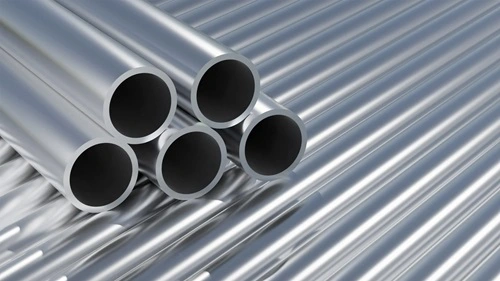Aluminum is one of the most abundant metals in the Earth’s crust and has become a cornerstone of modern manufacturing and design. Known for its lightweight, durable, and corrosion-resistant properties, aluminum is used in a wide range of applications—from aerospace engineering to everyday household items. Here are over 10 interesting facts about aluminum that showcase its versatility and importance in our lives.

1. Aluminum is the Third Most Abundant Element
Aluminum is the third most abundant element in the universe by mass, following oxygen and silicon. It makes up about 8% of the Earth’s crust and is commonly found in minerals such as bauxite, which is the primary source of aluminum. This abundance is one reason aluminum is widely available and has become a popular choice in various industries.
2. A Lightweight Metal with Remarkable Strength
One of aluminum’s most notable characteristics is its lightweight nature. It is approximately one-third the weight of steel, which makes it an excellent choice for applications where weight savings are crucial, such as in aerospace and automotive design. Despite its lightweight, aluminum is incredibly strong and can be alloyed with other metals to enhance its strength and durability, making it suitable for structural applications.
3. Highly Corrosion-Resistant
Aluminum naturally forms a thin layer of aluminum oxide on its surface when exposed to air. This oxide layer acts as a protective barrier, preventing further corrosion and deterioration. This corrosion resistance makes aluminum an ideal material for outdoor and marine applications, such as in boats, airplanes, and architectural elements.
4. Aluminum is 100% Recyclable
One of the most significant environmental advantages of aluminum is that it is 100% recyclable. Unlike some materials that degrade in quality after recycling, aluminum can be recycled indefinitely without losing its properties. The recycling process requires only about 5% of the energy needed to produce new aluminum from raw materials, making it a sustainable choice. The growing emphasis on recycling and sustainability has led to increased demand for recycled aluminum in various industries.
5. Used in Aerospace Engineering
Aluminum is a critical material in the aerospace industry due to its lightweight and strong properties. It is used in aircraft frames, wings, and other structural components, contributing to improved fuel efficiency and performance. The Boeing 787 Dreamliner, for example, is made up of approximately 50% aluminum, showcasing its significance in modern aircraft design. Additionally, aluminum’s resistance to corrosion is vital for the longevity and safety of aircraft.
6. An Essential Element in Everyday Life
Aluminum is present in countless everyday products, making it an essential part of our lives. It’s found in packaging materials (like aluminum foil and beverage cans), construction materials (such as windows and siding), cooking utensils, and even electronics. The widespread use of aluminum reflects its versatility and adaptability in various applications, from the kitchen to the building site.
7. Aluminum Foil Was Introduced in the 1910s
Aluminum foil, a staple in many kitchens today, was first introduced in the 1910s. Initially, it was used primarily for packaging candies and other food items. Its ability to block light, moisture, and oxygen made it an excellent choice for preserving food. Today, aluminum foil is widely used for cooking, baking, and food storage, demonstrating the versatility of aluminum in everyday life.
8. Aluminum Alloys Are Stronger Than Pure Aluminum
While pure aluminum is relatively soft and malleable, aluminum alloys, which are created by combining aluminum with other metals (like copper, magnesium, or zinc), can be significantly stronger and more durable. This enhancement in strength and other properties makes aluminum alloys suitable for demanding applications, such as in the automotive and aerospace industries. The ability to customize aluminum through alloying allows engineers to tailor materials to specific requirements.
9. Aluminum is a Great Electrical Conductor
Aluminum is a good conductor of electricity, making it a popular choice for electrical wiring, particularly in overhead power lines and large electrical distribution networks. While copper is a better conductor, aluminum is lighter and less expensive, making it a practical alternative for many applications. Its conductivity is essential in ensuring efficient energy transmission, contributing to the overall effectiveness of electrical systems.
10. The Aluminum Industry is a Major Economic Contributor
The aluminum industry plays a significant role in the global economy. In the United States alone, the industry contributes billions of dollars annually and employs hundreds of thousands of people. The production, recycling, and fabrication of aluminum products create jobs across various sectors, from mining and manufacturing to transportation and construction. As demand for aluminum continues to rise, the industry’s impact on economic growth remains substantial.
11. Aluminum Can Be Anodized for Enhanced Durability
Anodizing is an electrochemical process that enhances the natural oxide layer on aluminum surfaces, increasing its corrosion resistance and durability. This process also allows for color customization, making anodized aluminum an attractive choice for architectural applications, consumer products, and decorative items. The anodized finish is not only visually appealing but also provides added protection against wear and tear.
12. A Lightweight Choice for Automotive Design
Aluminum is increasingly used in the automotive industry to improve fuel efficiency and reduce emissions. Many modern vehicles, including high-performance models, incorporate aluminum in their structures to lower weight without sacrificing safety. The Ford F-150, for example, uses an aluminum body, resulting in a significant weight reduction that enhances performance and fuel economy. This shift towards aluminum in automotive design reflects the industry’s commitment to sustainability and innovation.
13. Aluminum’s Role in Space Exploration
Aluminum’s lightweight and strength properties have made it a vital material in the field of space exploration. It is used in spacecraft structures, satellite components, and rocket bodies. The Mars Rover and various satellites rely on aluminum for structural integrity while minimizing weight to optimize fuel efficiency. This application highlights aluminum’s importance in pushing the boundaries of science and technology.
14. Aluminum Has Been Used for Centuries
Although modern aluminum production techniques were developed in the 19th century, the use of aluminum dates back to ancient times. Archaeological findings suggest that aluminum was used in various forms by ancient civilizations, including the Egyptians, who utilized aluminum compounds in dyes and pigments. This historical context underscores aluminum’s long-standing significance across cultures and eras.
15. Aluminum Can Be Formed into Complex Shapes
One of the unique properties of aluminum is its ability to be easily formed into complex shapes. This malleability makes it a preferred material for manufacturers looking to create intricate designs without compromising strength. Aluminum can be extruded, stamped, or cast into various shapes, allowing for versatility in product design—from automotive parts to consumer electronics.
Conclusion
Aluminum is much more than just a metal; it’s a remarkable material with a wide range of applications and benefits that enhance our daily lives. From its origins as an abundant element to its modern uses in aerospace, automotive design, and packaging, aluminum’s versatility and importance cannot be overstated. Each of these interesting facts about aluminum highlights its role in innovation, sustainability, and our economy, showcasing why it’s one of the most essential materials in the world today. Whether you’re drinking from an aluminum can, enjoying the lightness of a new bike, or admiring the architecture of a building, you’re experiencing the incredible properties of aluminum all around you.


